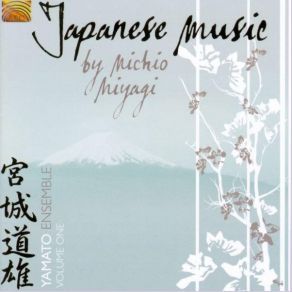Japanese Music by Michio Miyagi, Vol. 1
Download links and information about Japanese Music by Michio Miyagi, Vol. 1 by Yamato Ensemble. This album was released in 2007 and it belongs to World Music genres. It contains 7 tracks with total duration of 58:54 minutes.

|
|
|---|---|
| Artist: | Yamato Ensemble |
| Release date: | 2007 |
| Genre: | World Music |
| Tracks: | 7 |
| Duration: | 58:54 |
| Buy it NOW at: | |
| Buy on iTunes $9.99 | |
| Buy on iTunes $9.99 | |
Tracks
[Edit]| No. | Title | Length |
|---|---|---|
| 1. | Haru No Umi (The Sea in Springtime) | 7:58 |
| 2. | Beni Sobi (Rosebud Lips) | 3:43 |
| 3. | Haru No Yo (Spring Evening) | 13:03 |
| 4. | Seoto (The Roar of the Shallows) | 5:47 |
| 5. | Kumo No Anata-Ni (The Clouds over Yonder) | 3:17 |
| 6. | Sarashi-Fu Tegoto (The Patter of the Cloth-Bleachers) | 9:00 |
| 7. | Koma No Haru (Springtime in Korea) | 16:06 |
Details
[Edit]On some level it just seems wrong to use Western terms to describe Japanese music. Its ethos is completely different, as is the way it uses space and melody. Michio Miyagi was one of the greatest of Japan's 20th century composers, as well as a performer on koto, jushichigen, and shakuhachi. Although you can hear the influence of the West in his work, its real frame of reference is 19th century Japan. There's a lovely formality to pieces like "Haru No Umi," probably his best-known work, and the opener here, lovingly performed. But several of his popular works appear here, such as "Haru No Yo," which, at almost 13 minutes, effectively stands as an opus. The songs tend to take poems by established poets set to music. There's plenty of imagery in the music as it evokes, and that's evident in "Sarashi-fu Tegoto," which tries to put into music the sounds made by the cloth bleachers in the River Uji. It succeeds beautifully, and you have to wonder whether that's in part due to the fact that Miyagi was blind and used to processing things in ways that weren't visual. This forms a wonderful introduction to his work. The performers are largely vehicles for the compositions, and they let it shine through.